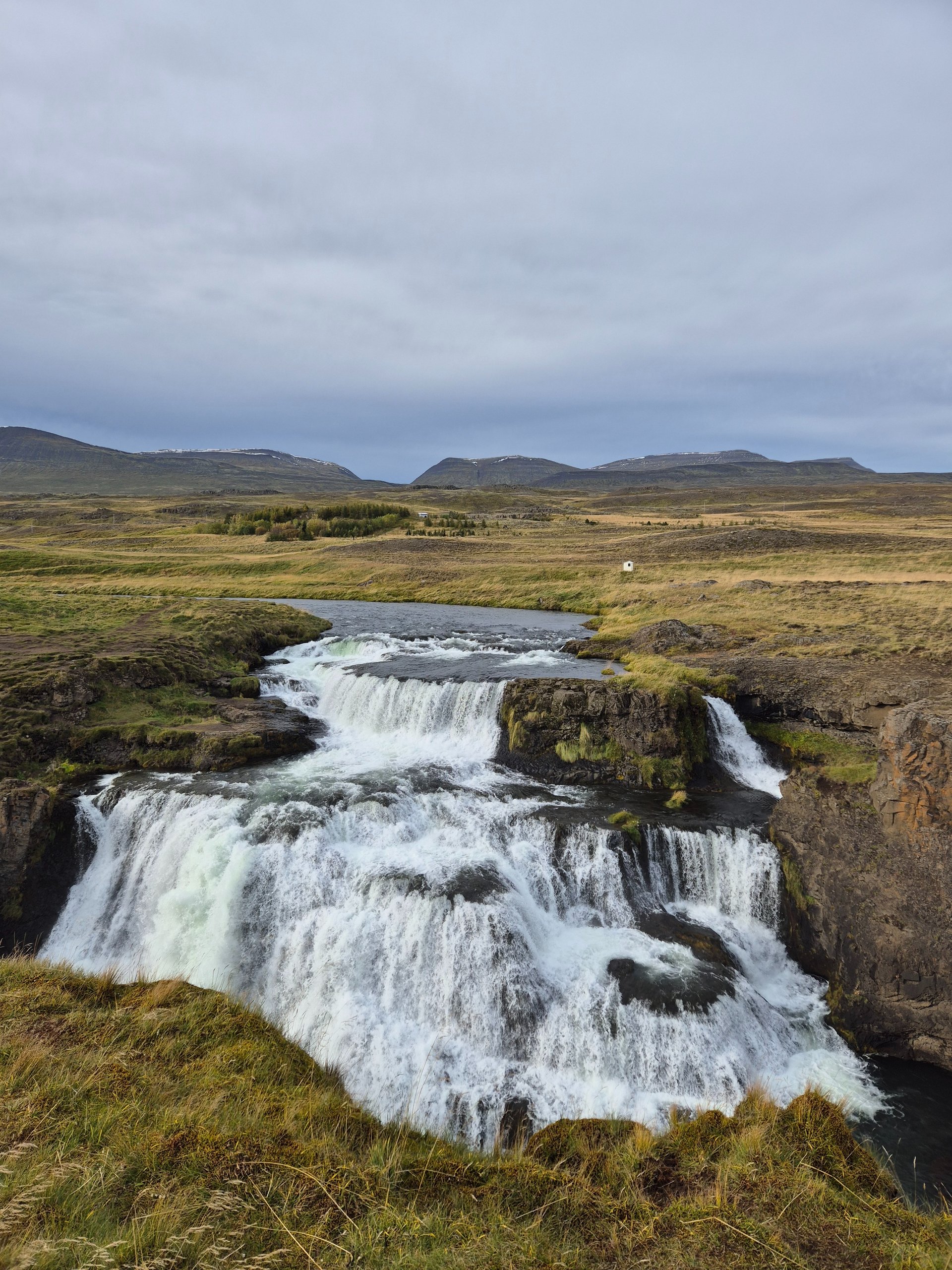Northern Iceland – Black Beaches, Seals, and Waterfalls
My second Iceland trip from september 2025.
In mid-September this year, a few friends and I decided to go on a trip. For the two of them, it was their first time visiting the beautiful island of Iceland, while it was already my second time there. In an earlier post, I wrote about my experiences and impressions from the southern and central parts of Iceland. In short: it was an unforgettable adventure!
But could the northern part of Iceland live up to my previous journey? You’ll find out in the next 10 minutes.
Arrival
The first day didn’t exactly go as planned. According to the Icelandair app, we had to depart either two days earlier or later than scheduled. Problems with the airline were back again – we opted to leave earlier. Luckily, we still had four full days to explore northern Iceland. Suitcases packed, backpacks on – off we went. After about a three-hour flight, the familiar sight appeared on the horizon: the island of fire and ice. Vast rivers and towering mountains shaped the landscape below.
Once we landed, we waited in vain for our luggage – it never arrived. Like several other passengers, our suitcase hadn’t made the trip. The issue was likely related to the recent cyberattack on Berlin Airport.
This left us with a few problems: one of us was in shorts and flip-flops, another without a warm jacket – and all our spare clothes and toiletries were missing. So, we had to face the freezing Icelandic cold with whatever we had. Quite a crazy start to a vacation, if you ask me.
A bit later, we picked up our rental car and drove through total darkness straight to Blönduós. A quick tip: definitely book a 4x4 vehicle, since Iceland’s roads aren’t always paved and some detours lead over gravel tracks.
Our first nights were spent at the Húnafell Guesthouse – highly recommended! Friendly staff, plenty of travelers to meet, and an outdoor area with a hot tub and pool.
Day 1
Hunger got us out of bed early in the morning, time for breakfast! We had already done some light grocery shopping the day before. Our budget-friendly menu: pesto pasta, cornflakes, bread, and eggs – which made up about 80% of our meals for the trip. I know, not very exciting, but if you want to enjoy more “luxury” in Iceland, be prepared to pay at least triple the price compared to Germany. So, definitely factor food costs into your budget!
After a quick bite, we set our goal for the day: heading east toward Akureyri to buy warmer clothes and toiletries, since stores outside of bigger towns are rare. On the way, we made our first stop: Goðafoss.
Goðafoss means “Waterfall of the Gods” and is one of Iceland’s most famous and beautiful waterfalls. The name dates back to around the year 1000 AD, when Iceland officially converted to Christianity. According to legend, the law speaker at the time threw his statues of the old Norse gods, like Thor and Odin, into the waterfall – symbolizing the rejection of paganism.
What makes this waterfall special is its semicircular shape, which looks particularly magical during sunsets or under the northern lights.
A funny moment happened when we were admiring the waterfall from below – a woman approached us and asked, “So, did you get your luggage back yet?” We laughed when we realized she had also “stranded” in Iceland without her suitcase on the same flight.
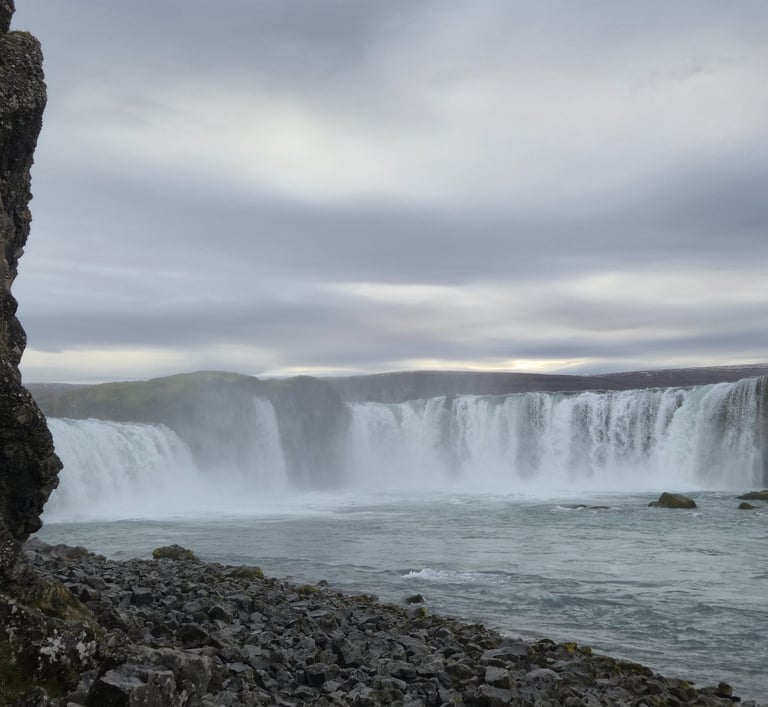

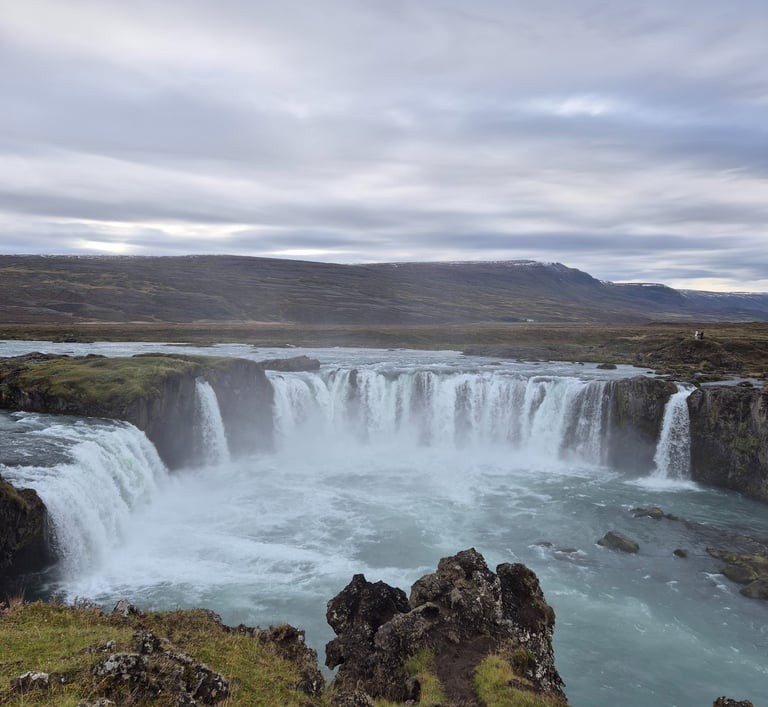

After the breathtaking Goðafoss, we continued on to Akureyri for a shopping stop. By then, the day was almost over. Around 6 p.m., we suddenly remembered Vínbúðin – the only place in Iceland to buy alcohol stronger than 2.5%. Regular supermarkets only sell low-alcohol beer. So, we grabbed a few drinks to end the evening in peace.
Day 2
Our second day led us northwest to Sauðárkrókur, a small fishing village known for its black sand beach, Borgarsandur. The beach stretches about 4 km with stunning fjord views. We quickly learned how strong the coastal winds can be – gusts over 50 km/h are a real hazard to your car doors!

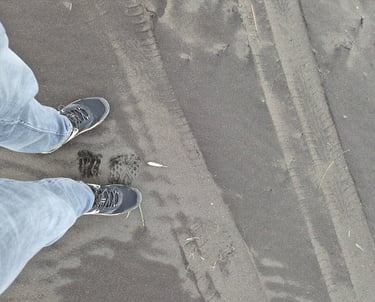

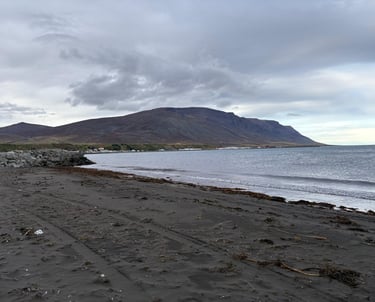
After a walk along the beach, we drove on to Reykjafoss, a lesser-known waterfall that’s not crowded and features a nearby hot spring – a perfect change of pace. We followed the cliffs around the waterfall until we reached the hot spring. Time to strip down and jump in! The water temperature ranged between 30–40 °C and fit around six to eight people. By midday, a few others joined us, so if you prefer solitude, visit early in the morning or later in the evening. The spring is only a few minutes’ walk from the parking area.



As it got late, our last stop was Bergárfoss. We had to park far away since high tide prevented us from crossing the river. So, we laced up our hiking boots and ventured into the wide open fields. The path wasn’t marked on any map, so we decided to navigate without one. Following the ridge and mountainside, we eventually spotted the waterfall from afar. Unfortunately, the sun was already setting, and heading back in the dark – with no streetlights in rural Iceland – would’ve been risky. The darkness there is truly dark.
Day 3
The sun rose, and with sore legs, we dragged ourselves out of bed. Our first stop: a shipwreck. We drove about two hours west along the fjords through heavy rainstorms sweeping across the land. We stopped by a muddy dirt road – we could’ve maybe driven farther, but decided not to risk it. Carefully, we walked through the mud until the wreck appeared behind a small hill. From there, we could see it in the distance, though the high tide prevented us from getting closer. At low tide, it’s reportedly possible to cross the river to reach it.

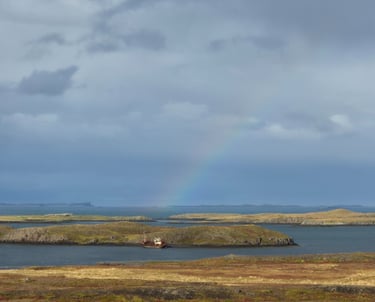
Stykkisholmur Shipwreck
Still, the detour was worth it – it led us directly toward our next destination: Kirkjufellsfoss.
Again, we drove through bursts of rain and sunlight, creating countless rainbows. At Kirkjufell, we parked at the official lot. What immediately stood out was the incredible landscape – unique rock formations unlike anything I had seen in southern Iceland. And, of course, another beautiful waterfall to admire.
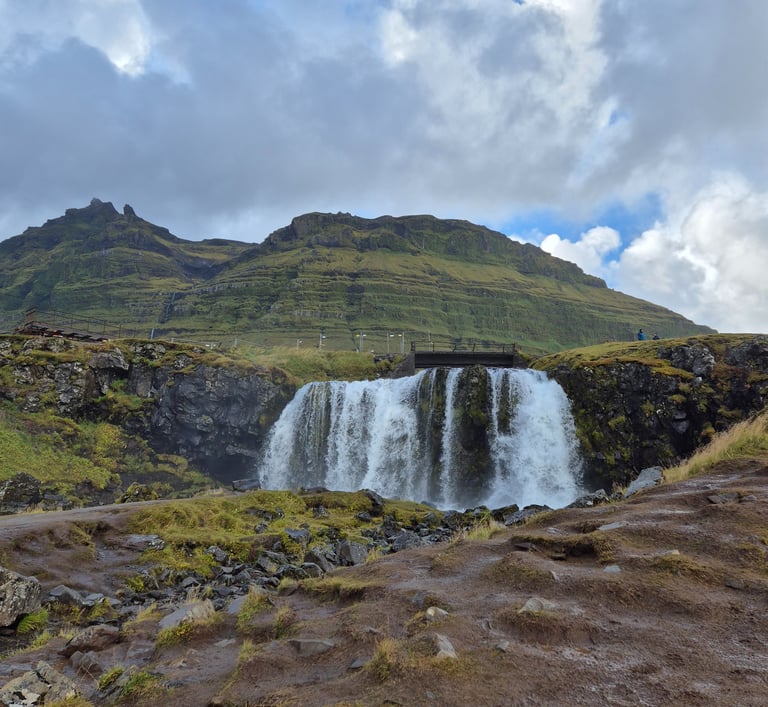



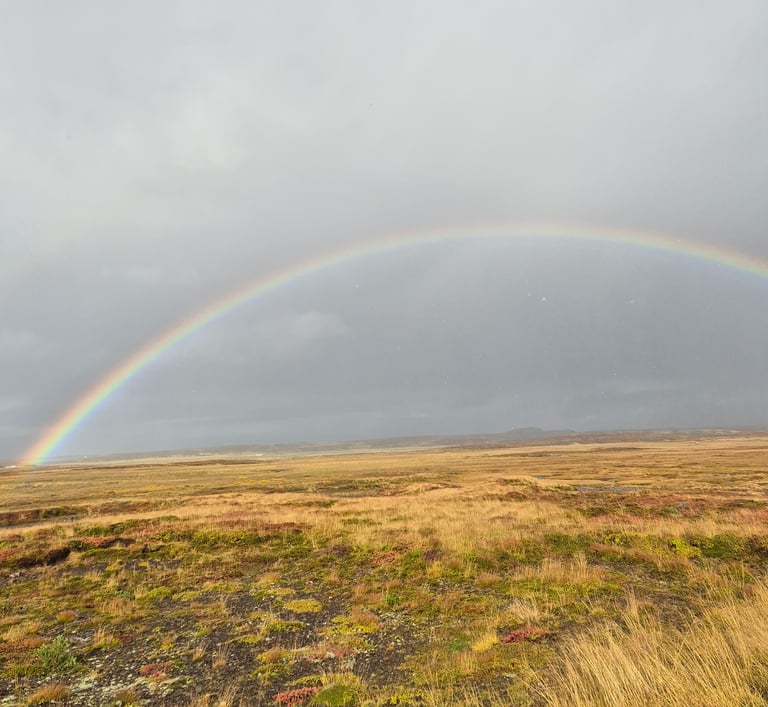

If you’re already there, head a bit further west to Kerlingarfoss – less crowded and even more impressive.
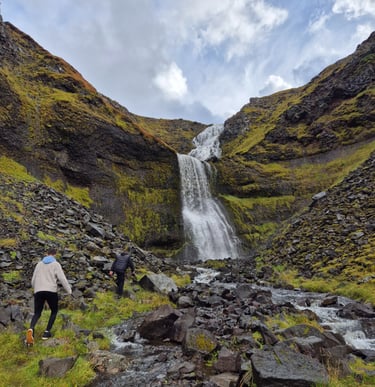


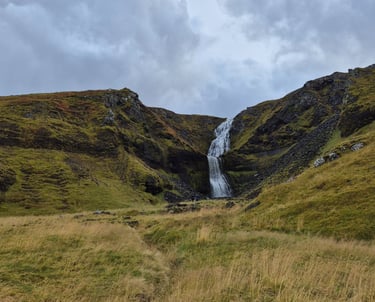
A special highlight of our trip was Ytri-Tunga, a stony beach that glows beautifully at sunset. With some patience and sharp eyes, you might spot seals swimming or lounging on the rocks. If you don’t see any at first, don’t give up – patience pays off! We nearly left, but on our way back to the car, we spotted several “bobbing heads” in the water – seals diving and resurfacing. That alone made the visit worthwhile.
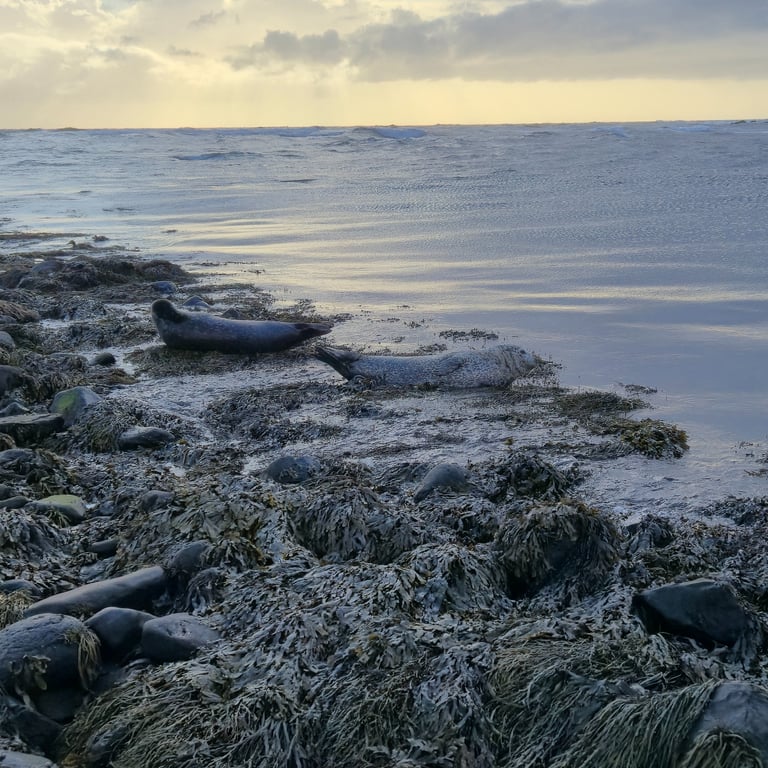
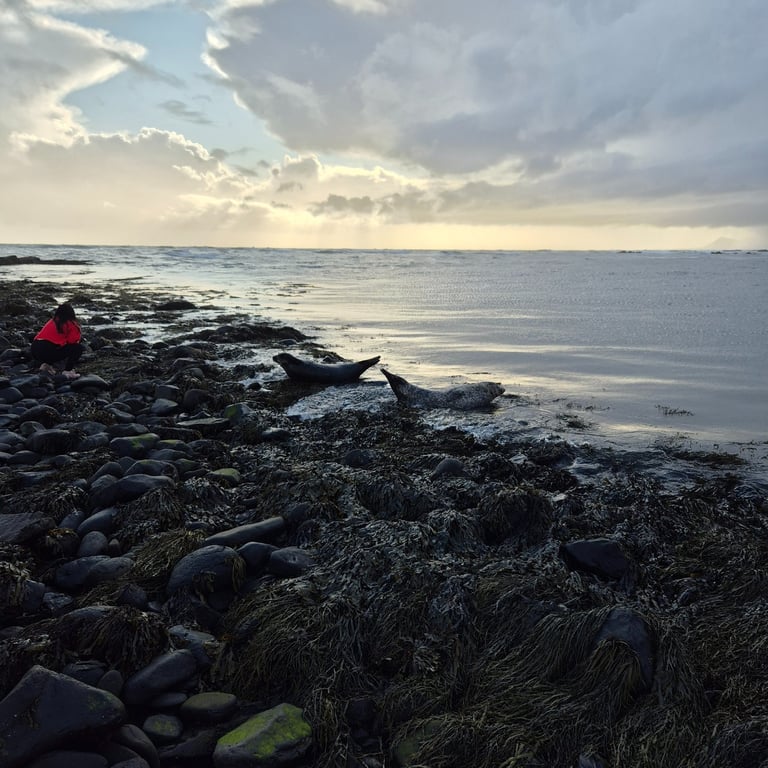

That night, we were lucky enough to glimpse the northern lights – faintly shimmering behind the cloud cover. Depending on the season and weather, the KP index (which measures aurora strength) can vary a lot. The photo I took with my phone’s night mode looks much brighter than it really was, but I still hope to one day see the aurora in its full glory.

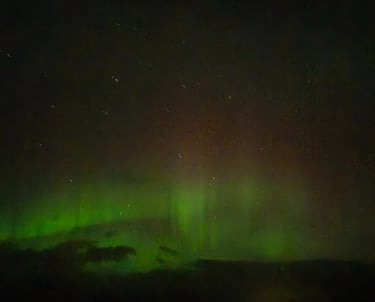
Day 4
Our fourth and final day had arrived – and it turned out to be quite the adventure. First stop: the geysers. I had written about them in my previous travel post, and once again, they were absolutely mesmerizing. Sadly, Strokkur didn’t shoot quite as high as it had the year before.
Here’s a quick explanation of how a geyser forms: underground water is superheated by hot rock, becoming pressurized and exceeding 100 °C without boiling. When the pressure suddenly drops, the water flashes into steam, and the geyser erupts explosively. Strokkur erupts every 5–10 minutes, while the Great Geysir rarely does anymore.
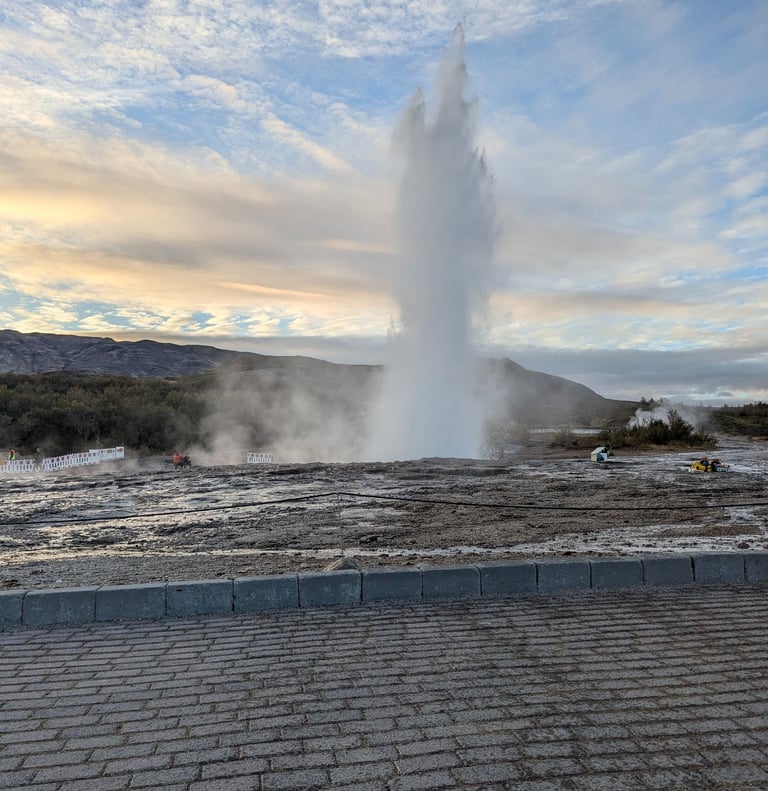

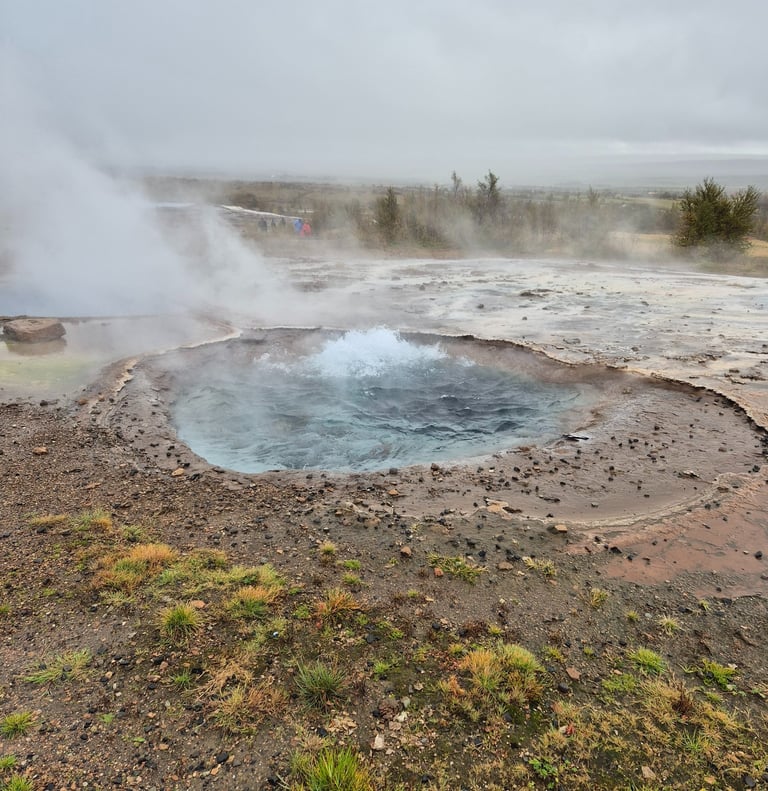

After watching a few eruptions, we drove on to Glymur – which translates to “rumble” or “roar.” About an hour from Reykjavík, this waterfall is one of the most challenging hikes in Iceland. The parking area lies deep in the valley, while the waterfall itself towers high up the mountain.
Plan at least three to four hours for the full hike. Dressed in thermal layers and hiking boots, we set off across the plateau, passing smaller waterfalls and even through a small cave. Eventually, we reached a dead end – steep cliff on one side, icy river and zipline on the other. We didn’t think twice: shoes off, grit your teeth, and cross the river barefoot! Definitely bring a towel – you’ll need it, since that wasn’t the only river crossing.

From there, it was all uphill: rocky steps, flat paths, even some climbing along cliff walls. The higher we got, the more stunning the view – endless valleys and the open sea in the distance. We took breaks now and then, listening to the increasing roar of Iceland’s once-highest waterfall. On the way up, small mountain streams trickled down, and I couldn’t resist filling my bottle. The water was crystal clear and drinkable up there – as long as it doesn’t flow near livestock or stagnant pools.
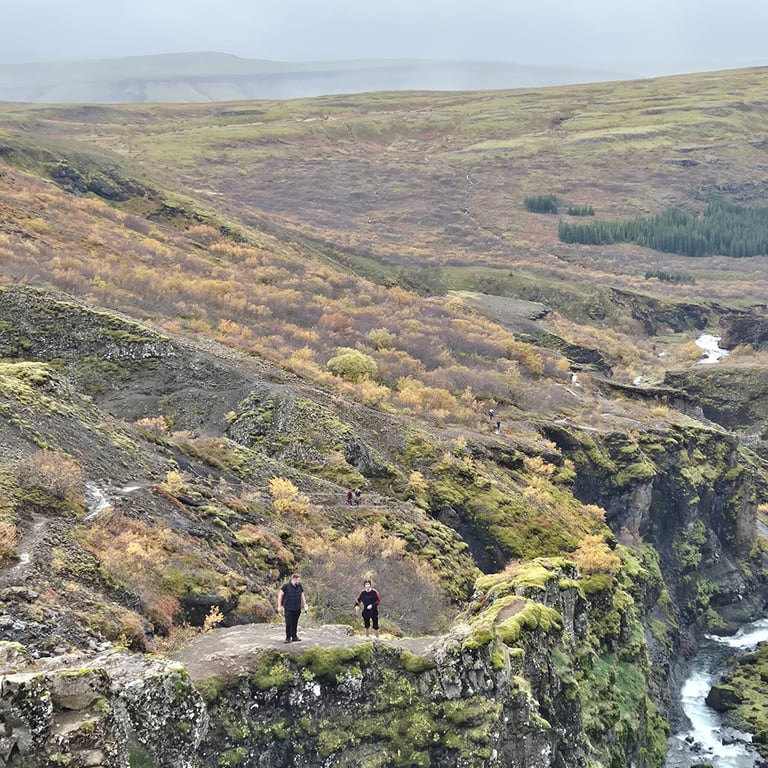
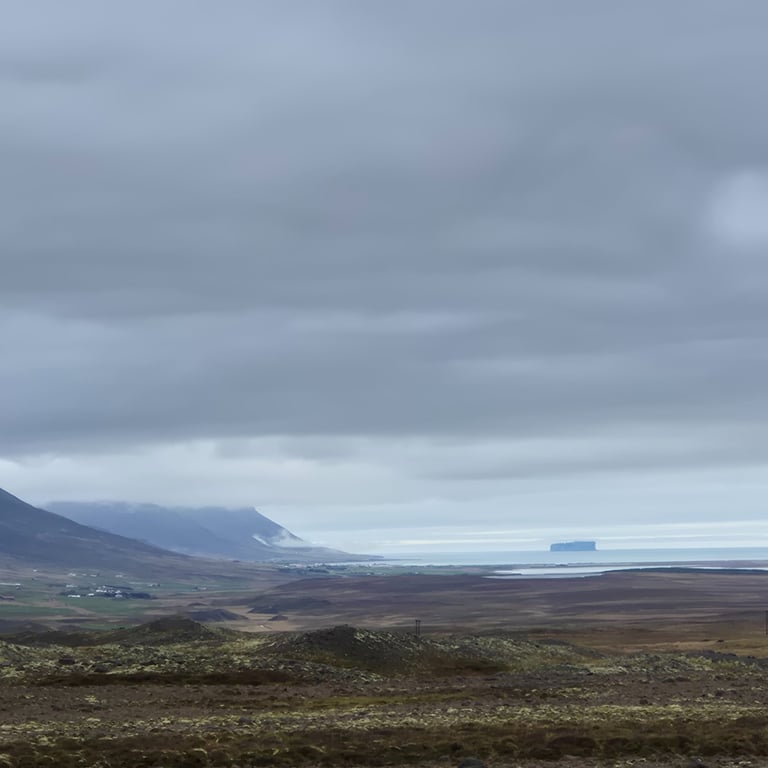

After about two hours, we finally reached the top. What we hadn’t considered: the way back down. For variety, we took the opposite route – which meant another icy river crossing, barefoot again. Quite the endurance test! By the end of the day, we were exhausted but happy to be back at our hostel, ready to fly home early the next morning.
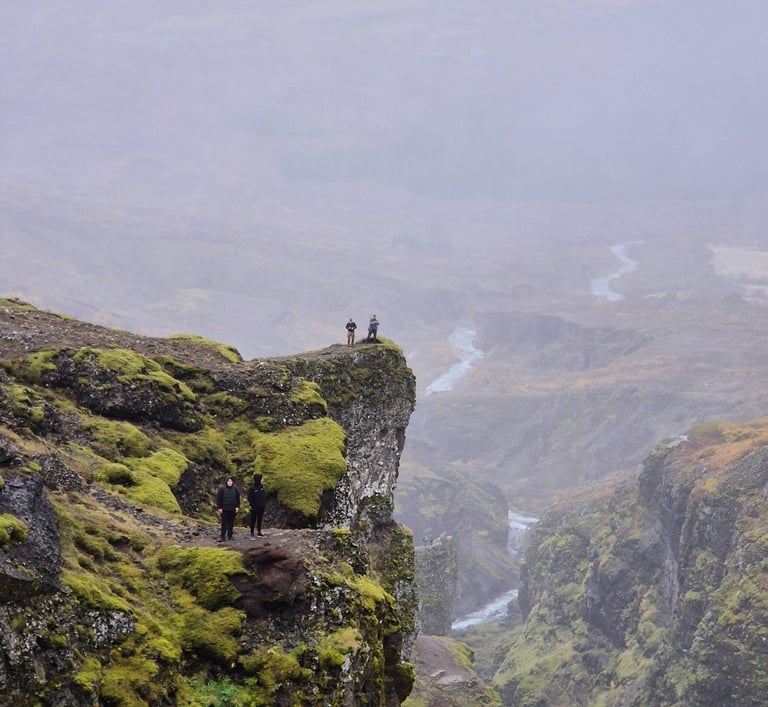

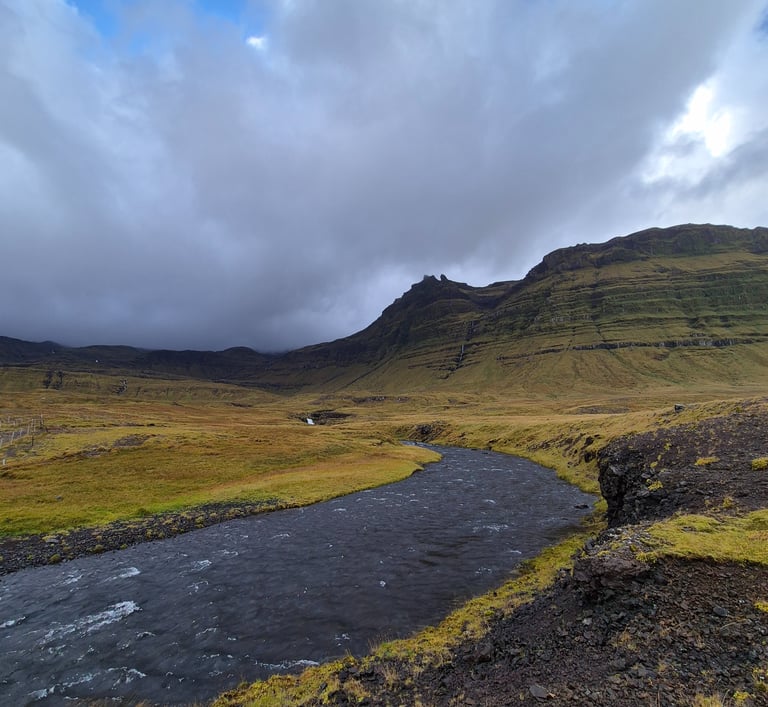

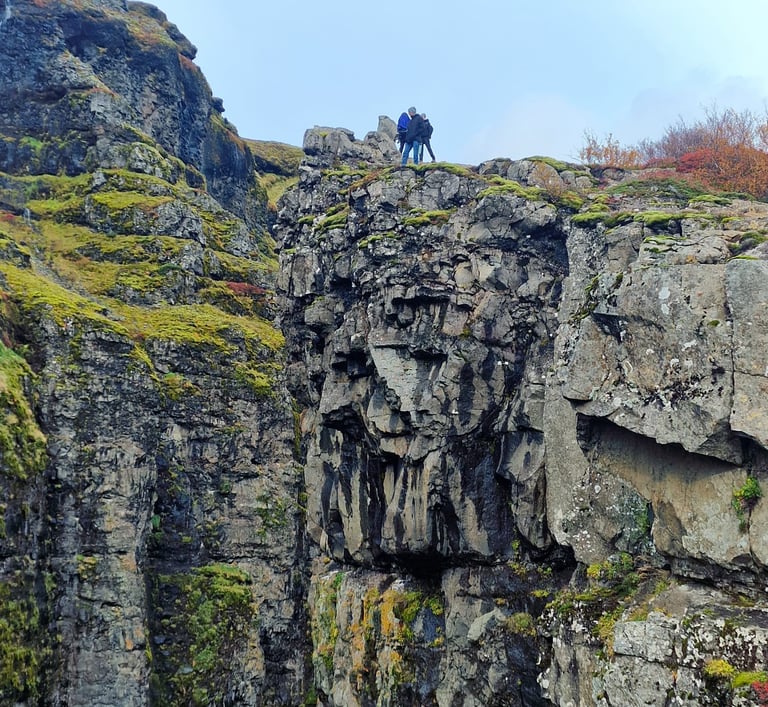

Iceland didn’t disappoint me this time either – despite all the mishaps, it was an incredible adventure with friends. If you love hiking and solitude, this is your place to find peace. The country has so much more to offer than I could ever capture in my two reports – from icy glaciers and puffins to whale watching and cave explorations.
Maybe this story has made you a little curious about your next possible travel destination!

